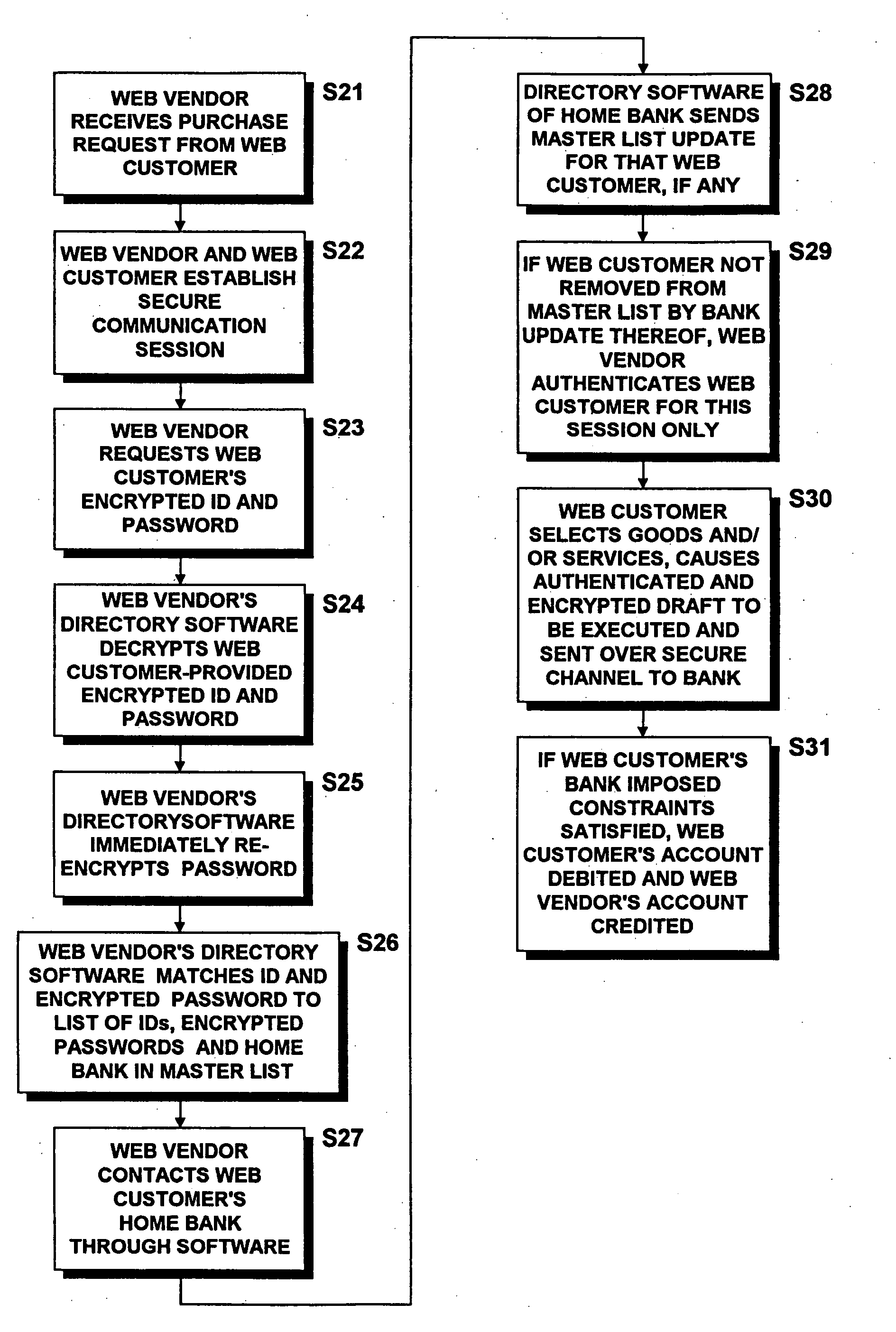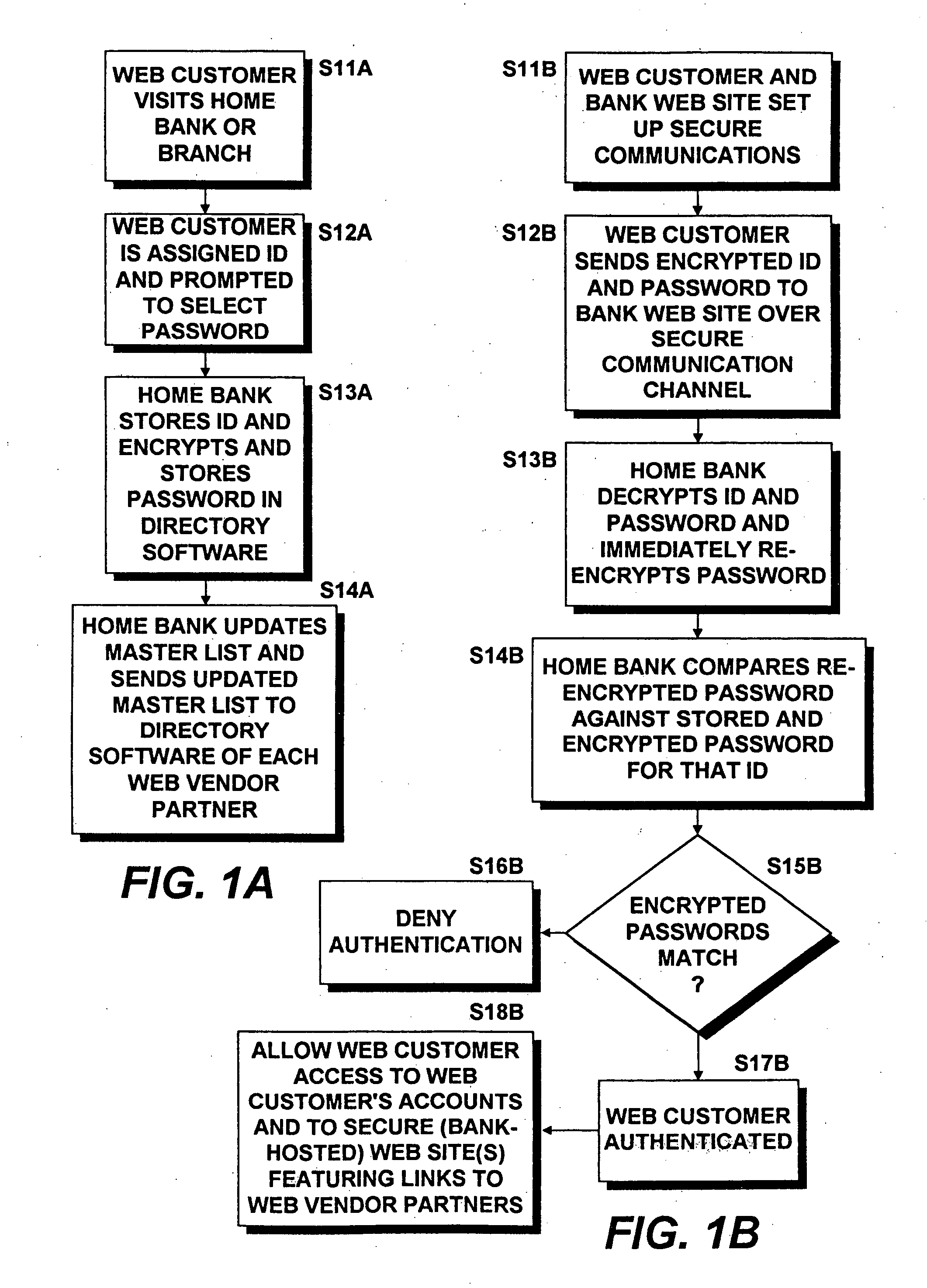Methods and systems for single sign-on authentication in a multi-vendor e-commerce environment and directory-authenticated bank drafts
a multi-vendor e-commerce and authentication system technology, applied in the field of customer and draft authentication in electronic commerce, can solve the problems of theft (or misappropriation), credit card information is particularly sensitive to fraud and misuse, and otherwise valid credit card number may be easily fraudulently used to purchase goods or services over the web, so as to ensure the integrity and security of the personal and financial information of web customers
- Summary
- Abstract
- Description
- Claims
- Application Information
AI Technical Summary
Benefits of technology
Problems solved by technology
Method used
Image
Examples
Embodiment Construction
Functional Overview
[0021] The present invention solves many of the problems inherent in conventional e-commerce schemes; notably the dissemination of personal and / or financial information across unsecured networks and Web vendors, transactional security, the need to repeatedly re-enter personal information and the dangers of identity theft and identity confusion, to name a few. According to the present invention, only a limited number of entities (and preferably only one such entity) holds the Web customer's personal and / or financial information, such as bank account numbers and credit / charge card numbers. Preferably, the entity to hold such information is an entity that already enjoys a relationship of trust with the prospective or existing Web customers, such as the Web Customers' bank or banks, credit card holders, etc. In this manner, none of the Web vendors (or fewer Web vendors) hold or have access to the Web customers' personal and / or financial information, such as account n...
PUM
 Login to View More
Login to View More Abstract
Description
Claims
Application Information
 Login to View More
Login to View More - R&D
- Intellectual Property
- Life Sciences
- Materials
- Tech Scout
- Unparalleled Data Quality
- Higher Quality Content
- 60% Fewer Hallucinations
Browse by: Latest US Patents, China's latest patents, Technical Efficacy Thesaurus, Application Domain, Technology Topic, Popular Technical Reports.
© 2025 PatSnap. All rights reserved.Legal|Privacy policy|Modern Slavery Act Transparency Statement|Sitemap|About US| Contact US: help@patsnap.com



